For your kitchen to stay beautiful
In this pages you will find some useful tips to maintain over time your Gruppo Cucine furniture
Door Maintenance
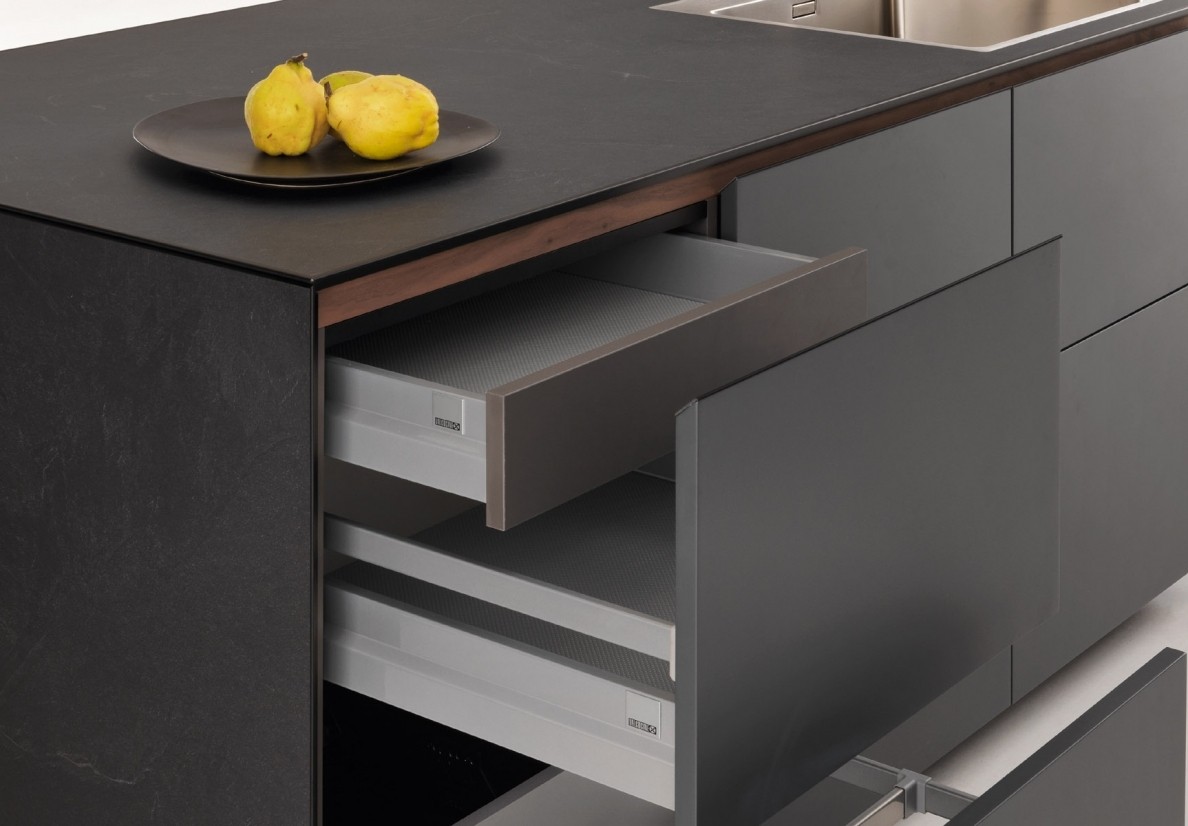
LAMINATE DOORS
To clean the laminate doors use soft cloths slightly moistened with a window cleaner.
What you should do
To clean the laminate doors use soft cloths slightly moistened with a window cleaner.
What you should NOT do
Do not use aggressive detergents, abrasive powders, acid water scale-removers or pure bleach because they could spoil the finish.
Do not use products containing wax or silicone because they can produce shades with a different brightness.
WARNING: do not clean the aluminium profiles with bleach (sodium hypochlorite).
ALUMINIUM LAMINATE DOORS AND ALUMINIUM FINISH
To clean the laminate doors use soft cloths slightly moistened with a window cleaner.
What you should do
Aluminium laminate doors need special care because they are coated with a special varnish that must not absolutely be scratched.
To remove heavy dirt use window cleaners containing alcohol or ammonia.
What you should NOT do
Do not use aggressive products, abrasive powders, acid or alkaline water scale-removers or bleach because they could spoil the protective finish.
WARNING: do not clean the aluminium profiles with bleach (sodium hypochlorite).
What you should do
Aluminium laminate doors need special care because they are coated with a special varnish that must not absolutely be scratched.
To remove heavy dirt use window cleaners containing alcohol or ammonia.
What you should NOT do
Do not use aggressive products, abrasive powders, acid or alkaline water scale-removers or bleach because they could spoil the protective finish.
WARNING: do not clean the aluminium profiles with bleach (sodium hypochlorite).
GLASS AND GLASS DOORS
The glass is tempered, meaning that it has been subjected to a process that makes it 5 times more resistant than traditional glass. In the event of breakage, this glass breaks into tiny pieces that do not cut.The glass is extremely stain and water-scale resistant (easily removable with Viakal), especially...
What you should do
The glass is tempered, meaning that it has been subjected to a process that makes it 5 times more resistant than traditional glass. In the event of breakage, this glass breaks into tiny pieces that do not cut.
The glass is extremely stain and water-scale resistant (easily removable with Viakal), especially when it has a glossy finish.
To remove dirt, use everyday glass cleaning products or detergents.
what you should NOT do
Sliding metal materials over the acid-treated surface leaves marks that are partly due to metal being left in the glass micro-cavities, and to the breakage of the micro-ridges created by the acid treatment. This phenomenon is rare on smooth glass; bear in mind that glass is cut by materials that are stronger than it is (diamonds and hard stones, ceramics, tiles, plates, crystal).
What you should do
The glass is tempered, meaning that it has been subjected to a process that makes it 5 times more resistant than traditional glass. In the event of breakage, this glass breaks into tiny pieces that do not cut.
The glass is extremely stain and water-scale resistant (easily removable with Viakal), especially when it has a glossy finish.
To remove dirt, use everyday glass cleaning products or detergents.
what you should NOT do
Sliding metal materials over the acid-treated surface leaves marks that are partly due to metal being left in the glass micro-cavities, and to the breakage of the micro-ridges created by the acid treatment. This phenomenon is rare on smooth glass; bear in mind that glass is cut by materials that are stronger than it is (diamonds and hard stones, ceramics, tiles, plates, crystal).
LACQUERED DOORS AND OTHER LACQUERED ELEMENTS
Lacquered doors require particular care to preserve their finish and avoid any surface damage.Use soft, non abrasive cloths.
What you should do
Lacquered doors require particular care to preserve their finish and avoid any surface damage.
Use soft, non abrasive cloths.
What you should NOT do
Do not use products containing solvents, acetone or abrasive substances, because they could scratch the door surface finish.
Do not use products containing wax, alcohol or silicone because they can produce shades with a different brightness.
WARNING: do not clean the aluminium profiles with bleach (sodium hypochlorite)..
What you should do
Lacquered doors require particular care to preserve their finish and avoid any surface damage.
Use soft, non abrasive cloths.
What you should NOT do
Do not use products containing solvents, acetone or abrasive substances, because they could scratch the door surface finish.
Do not use products containing wax, alcohol or silicone because they can produce shades with a different brightness.
WARNING: do not clean the aluminium profiles with bleach (sodium hypochlorite)..
Worktops Maintenance
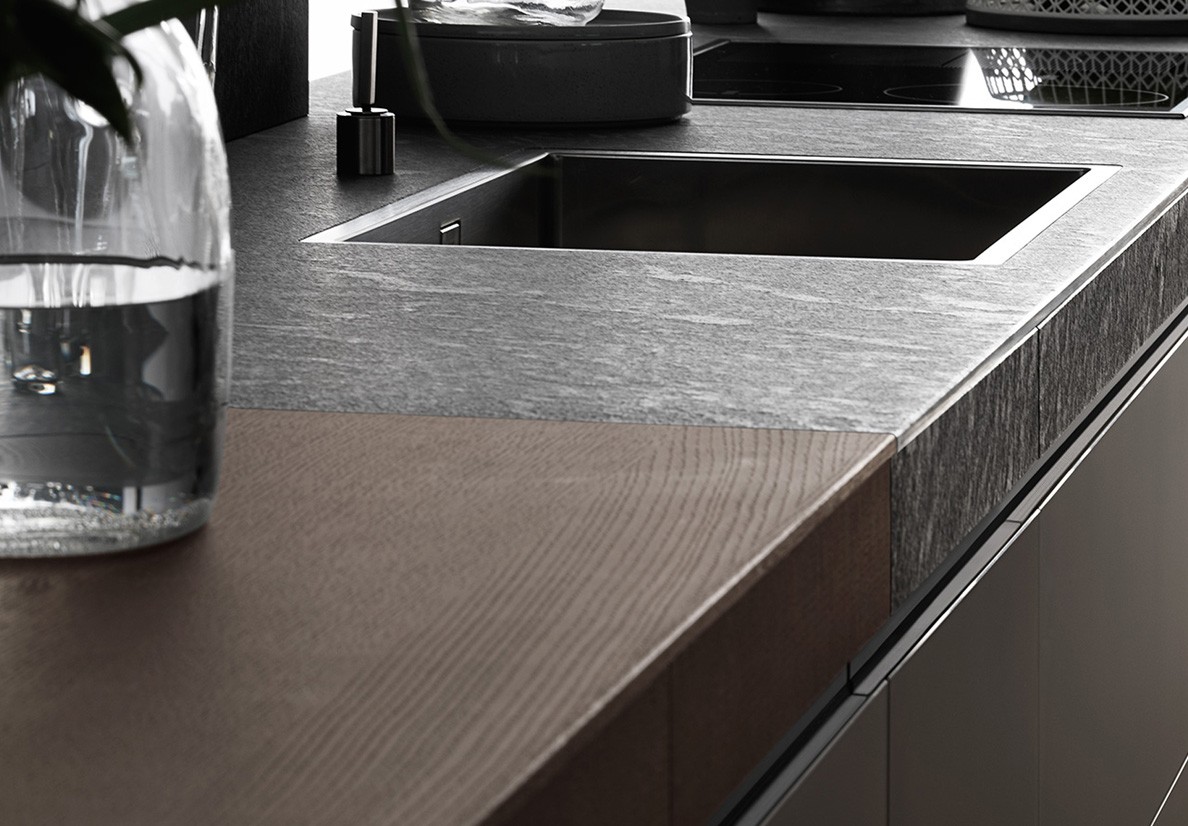
CRISTALITE WORKTOPS
What you should do
To clean acrylic worktops use water and neutral detergents.
To remove very difficult stains or to restore the initial brightness of the surface, rub the worktop with a fine Scotch-Brite sponge.
Cleaning should be carried out by doing slightly circular movements.
Acrylic worktops, though in full compliance with strict norms, are not suitable to chop and it is therefore recommended to use wooden or polyethylene chopping boards.
It is indispensable to use pan coasters when laying hot pots and coffee makers.
What you should NOT do
Although acrylic worktops are resistant and compact, some products could damage its surface.
In case of contact with solvents, acetone or acids rinse with abundant water and improve the surface finish with a fine Scotch-Brite sponge.
To clean acrylic worktops use water and neutral detergents.
To remove very difficult stains or to restore the initial brightness of the surface, rub the worktop with a fine Scotch-Brite sponge.
Cleaning should be carried out by doing slightly circular movements.
Acrylic worktops, though in full compliance with strict norms, are not suitable to chop and it is therefore recommended to use wooden or polyethylene chopping boards.
It is indispensable to use pan coasters when laying hot pots and coffee makers.
What you should NOT do
Although acrylic worktops are resistant and compact, some products could damage its surface.
In case of contact with solvents, acetone or acids rinse with abundant water and improve the surface finish with a fine Scotch-Brite sponge.
LAMINATE WORKTOPS
What you should do
For the cleaning of laminate worktops it is generally sufficient to use alcohol or neutral liquid detergents. Near the sink or in case of very 'hard' water water scale can form. To remove it simply rub the surface with a sponge soaked in vinegar or water scale-remover, rinse and dry.
To clean the worktop aluminium profile, use only neutral, liquid and non-abrasive detergents.
What you should NOT do
Although our worktops are made of High Pressure Laminate (HPL) and comply with the strict standard EN 438, it is advisable to apply some precautionary measures.
Do not use acids, abrasive products or powders that could spoil the worktop brightness.
Do not lay hot pots on the worktop, especially pots containing hot oil, pressure cookers or coffee makers.
Notwithstanding their great resistance to abrasion, laminate worktops are not suitable to chop and it is therefore recommended to use wooden or polyethylene chopping boards.
Do not leave water scale-removers for a long time on the worktops because they could stain it. Do not iron on the worktop.
WARNING: do not clean the aluminium profiles with bleach (sodium hypochlorite).
For the cleaning of laminate worktops it is generally sufficient to use alcohol or neutral liquid detergents. Near the sink or in case of very 'hard' water water scale can form. To remove it simply rub the surface with a sponge soaked in vinegar or water scale-remover, rinse and dry.
To clean the worktop aluminium profile, use only neutral, liquid and non-abrasive detergents.
What you should NOT do
Although our worktops are made of High Pressure Laminate (HPL) and comply with the strict standard EN 438, it is advisable to apply some precautionary measures.
Do not use acids, abrasive products or powders that could spoil the worktop brightness.
Do not lay hot pots on the worktop, especially pots containing hot oil, pressure cookers or coffee makers.
Notwithstanding their great resistance to abrasion, laminate worktops are not suitable to chop and it is therefore recommended to use wooden or polyethylene chopping boards.
Do not leave water scale-removers for a long time on the worktops because they could stain it. Do not iron on the worktop.
WARNING: do not clean the aluminium profiles with bleach (sodium hypochlorite).
LATHING BEECH WORKTOP
What you should do
Wood is a living material whose surface is protected by a thin oil varnish coat.
For its cleaning it is recommended to use a well-wrought wet cloth.
The doors should be cleaned along the wood venation, to better remove dirt form the pores and then carefully dried.
It is recommendable to use soft, non-abrasive cloths.
What you should NOT do
Never put the lamellar beech worktops near sinks or cooking tops. If so, it is necessary to create an insulation barrier to prevent water leaks and overheating (see page 62).
Do not use abrasive products that could scratch the surface.
Do not use products containing wax or silicone because they can produce shades with a different brightness.
Remove excess water from the cloths before using them.
WARNING: do not clean the aluminium profiles with bleach (sodium hypochlorite).
Wood is a living material whose surface is protected by a thin oil varnish coat.
For its cleaning it is recommended to use a well-wrought wet cloth.
The doors should be cleaned along the wood venation, to better remove dirt form the pores and then carefully dried.
It is recommendable to use soft, non-abrasive cloths.
What you should NOT do
Never put the lamellar beech worktops near sinks or cooking tops. If so, it is necessary to create an insulation barrier to prevent water leaks and overheating (see page 62).
Do not use abrasive products that could scratch the surface.
Do not use products containing wax or silicone because they can produce shades with a different brightness.
Remove excess water from the cloths before using them.
WARNING: do not clean the aluminium profiles with bleach (sodium hypochlorite).
MARBLE AND GRANITE WORKTOPS
What you should do
All our worktops are treated with a stain-preventing product when manufactured. It is recommended to repeat this treatment regularly with the product supplied or with one sharing the same characteristics.
How to carry out the treatment: wipe the worktop with a moistened cloth and dry it completely.
Spread the water-tightening stain-preventing product by means of a cloth all over the surface.
Let it dry then rub the worktop with a dry cloth.
For everyday cleaning use water and a neutral detergent or window cleaners containing alcohol or ammonia.
What you should NOT do
When cleaning the worktops do not use abrasive or aggressive products, metal wool or acid detergents.
WARNING: the stain-preventing treatment does not preserve marble from acid corrosion, therefore do not leave acid substances on marble worktops such as: lemon, vinegar, wine, etc.
Granite worktops have a greater resistance to acids and therefore need less care when used.
Highly coloured substances such as coffee, raw meat and some vegetables should not be left for a long time on the worktop because they could stain it.
All our worktops are treated with a stain-preventing product when manufactured. It is recommended to repeat this treatment regularly with the product supplied or with one sharing the same characteristics.
How to carry out the treatment: wipe the worktop with a moistened cloth and dry it completely.
Spread the water-tightening stain-preventing product by means of a cloth all over the surface.
Let it dry then rub the worktop with a dry cloth.
For everyday cleaning use water and a neutral detergent or window cleaners containing alcohol or ammonia.
What you should NOT do
When cleaning the worktops do not use abrasive or aggressive products, metal wool or acid detergents.
WARNING: the stain-preventing treatment does not preserve marble from acid corrosion, therefore do not leave acid substances on marble worktops such as: lemon, vinegar, wine, etc.
Granite worktops have a greater resistance to acids and therefore need less care when used.
Highly coloured substances such as coffee, raw meat and some vegetables should not be left for a long time on the worktop because they could stain it.
WORKTOPS, BACK PANELS AND STAINLESS-STEEL SINKS
What you should do
Worktops and back panels: they can present different kinds of dirt. To clean them use specific water scale-removers near the sink and products containing alcohol or ammonia and steel-specific products to remove any kind of spots.
Sinks: specific products can be used to remove water scale.
What you should NOT do
Do not use abrasive powders or products because they would scratch the surfaces. Do not use metal wool or sponges.
WARNING: do not store open bottles containing chemicals (muriatic acid, products to clear blocked drains) under the sink or near steel parts, since their vapours could corrode stainless-steel.
Steel-specific products should not get in contact with laminate worktops because they could damage it.
Worktops and back panels: they can present different kinds of dirt. To clean them use specific water scale-removers near the sink and products containing alcohol or ammonia and steel-specific products to remove any kind of spots.
Sinks: specific products can be used to remove water scale.
What you should NOT do
Do not use abrasive powders or products because they would scratch the surfaces. Do not use metal wool or sponges.
WARNING: do not store open bottles containing chemicals (muriatic acid, products to clear blocked drains) under the sink or near steel parts, since their vapours could corrode stainless-steel.
Steel-specific products should not get in contact with laminate worktops because they could damage it.
Aluminum Profiles and Elements Maintenance
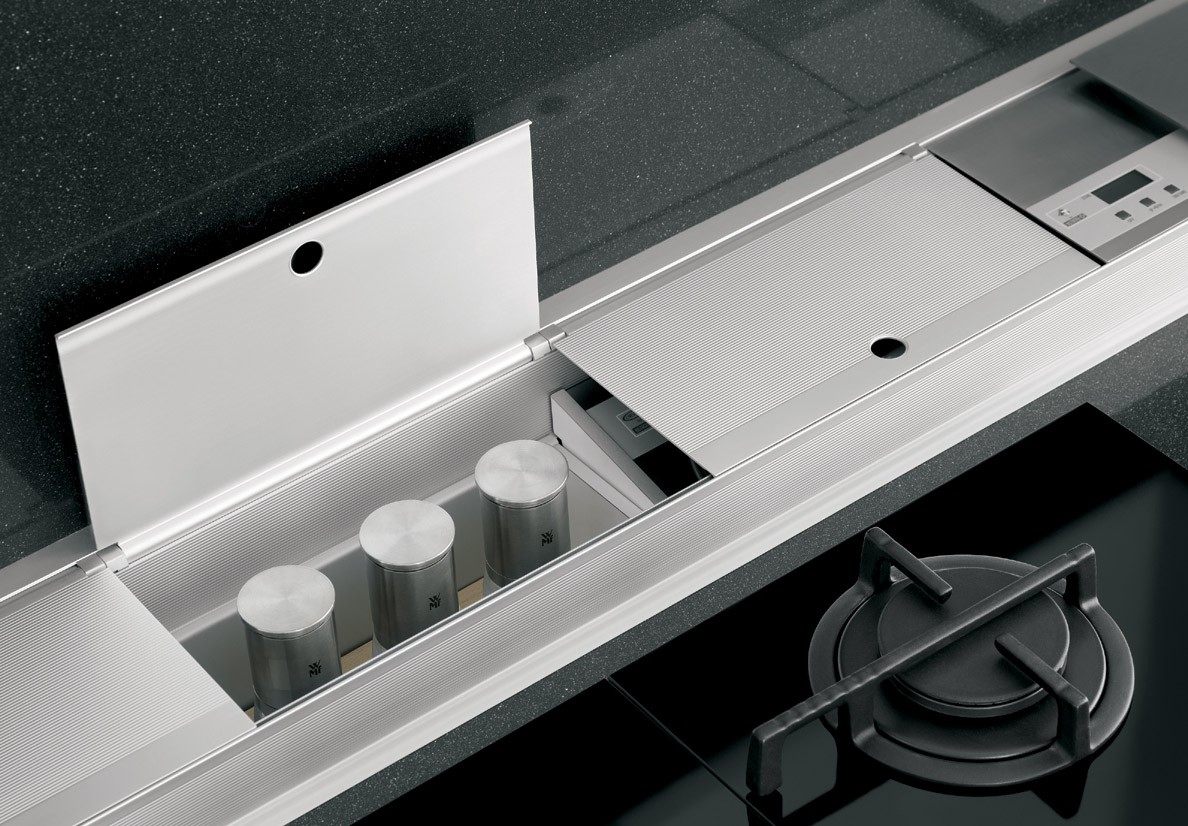
ALUMINIUM PROFILES AND ELEMENTS
What you should do
Clean aluminium elements with water and alcohol-based products or with neutral detergents.
What you should NOT do
Do not use abrasive products or powders because they would scratch the surfaces. Do not use metal wool or sponges.
WARNING: do not clean the aluminium profiles with bleach or products containing bleach (sodium hypochlorite) because they could spoil the surface anodised finish thus staining it.
Clean aluminium elements with water and alcohol-based products or with neutral detergents.
What you should NOT do
Do not use abrasive products or powders because they would scratch the surfaces. Do not use metal wool or sponges.
WARNING: do not clean the aluminium profiles with bleach or products containing bleach (sodium hypochlorite) because they could spoil the surface anodised finish thus staining it.
Worktop Inserts & Chopping Boards Maintenance
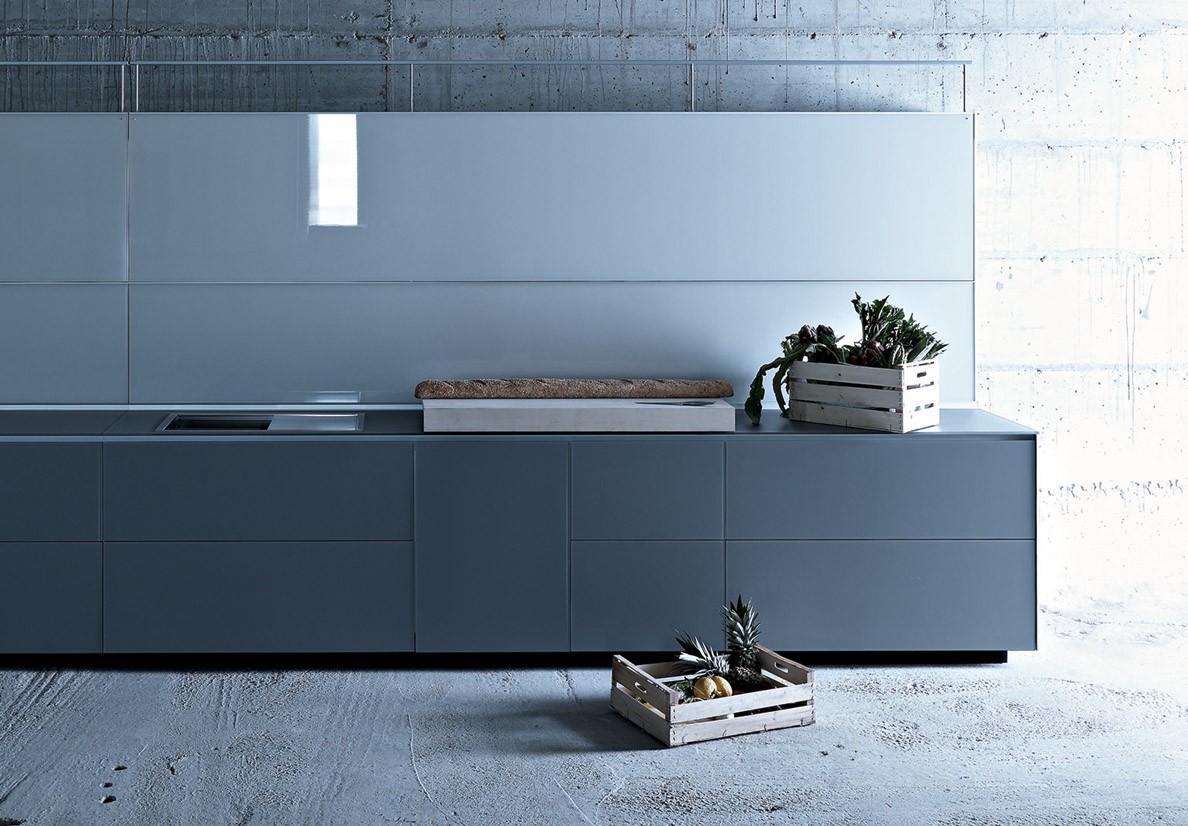
WORKTOP INSERTS AND CHOPPING BOARD OF UNVARNISHED RAW WOOD
What you should do
The raw-wood chopping board can be used to chop or knead since it has not been chemically treated. Of course, if it used as a chopping board the wood will get a 'worn' outlook.
Clean the board with a well-wrought moistened cloth to remove excess water and then dry it.
To partially restore the original surface finish it is possible to smooth it with sanding paper for wood, grain 160.
What you should NOT do
Do not plunge the chopping board into water, do not soak it in water during washing and do not put under direct sunlight or close to heat sources.
WARNING: The preparation of food with strong colours such as row meat or vegetable such as carrots on untreated wood can produce particulary stubborn stais.
The raw-wood chopping board can be used to chop or knead since it has not been chemically treated. Of course, if it used as a chopping board the wood will get a 'worn' outlook.
Clean the board with a well-wrought moistened cloth to remove excess water and then dry it.
To partially restore the original surface finish it is possible to smooth it with sanding paper for wood, grain 160.
What you should NOT do
Do not plunge the chopping board into water, do not soak it in water during washing and do not put under direct sunlight or close to heat sources.
WARNING: The preparation of food with strong colours such as row meat or vegetable such as carrots on untreated wood can produce particulary stubborn stais.
Sinks Maintenance
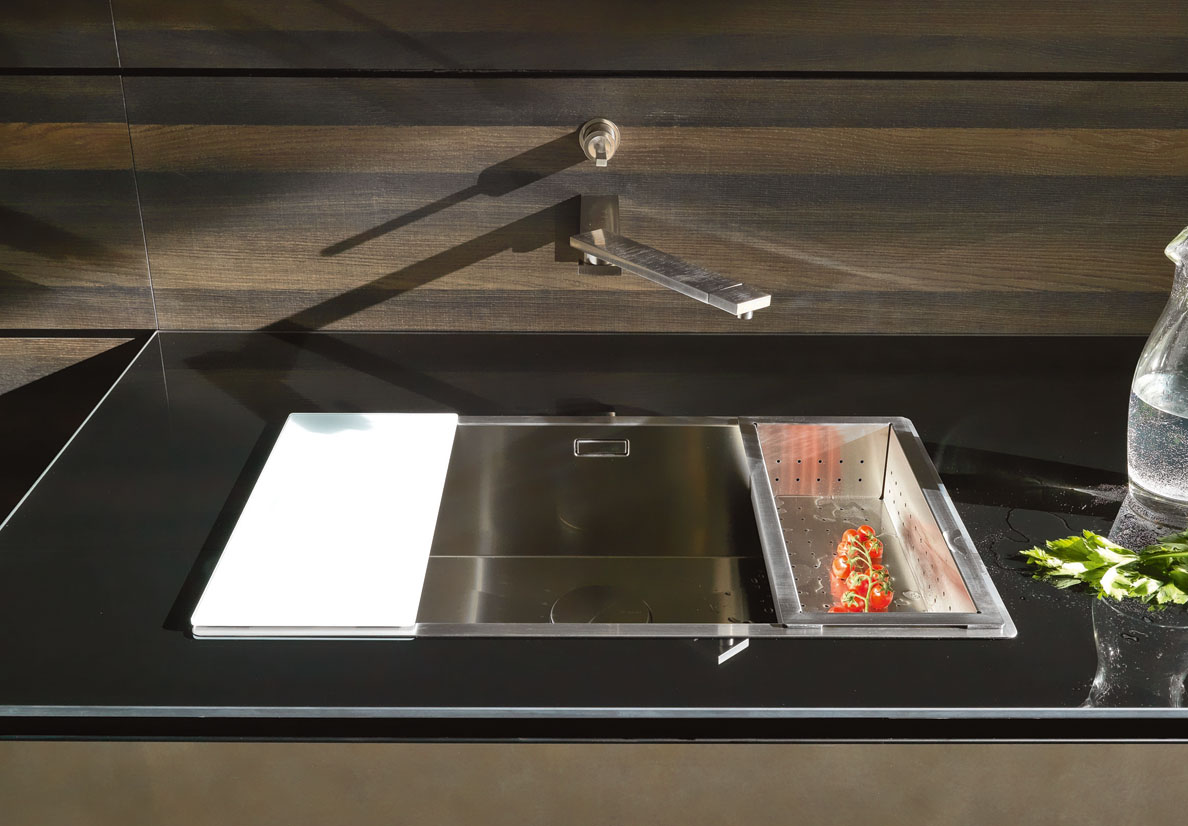
RESIN SINKS
What you should do
Resin sinks can be cleaned by using soft detergents and lukewarm water and rubbing the surface with a soft cloth.
Use a cloth soaked in alcohol or bleach to remove possible stains.
Water scale can be eliminated with specific water scale-removers that must be immediately washed away. Generally speaking, all resin products distributed by Valcucine are accompanied by a guarantee sheet and a maintenance handbook that must be followed carefully.
What you should NOT do
Highly alkaline substances such as ammonia or caustic soda must be washed away from the sink basins.
Do not use hot caustic soda or similar products to clear blocked drains.
Do not use abrasive powders or products because they would scratch the surface.
Do not use metal wool or sponges.
Resin sinks can be cleaned by using soft detergents and lukewarm water and rubbing the surface with a soft cloth.
Use a cloth soaked in alcohol or bleach to remove possible stains.
Water scale can be eliminated with specific water scale-removers that must be immediately washed away. Generally speaking, all resin products distributed by Valcucine are accompanied by a guarantee sheet and a maintenance handbook that must be followed carefully.
What you should NOT do
Highly alkaline substances such as ammonia or caustic soda must be washed away from the sink basins.
Do not use hot caustic soda or similar products to clear blocked drains.
Do not use abrasive powders or products because they would scratch the surface.
Do not use metal wool or sponges.
Range Hood Maintenance
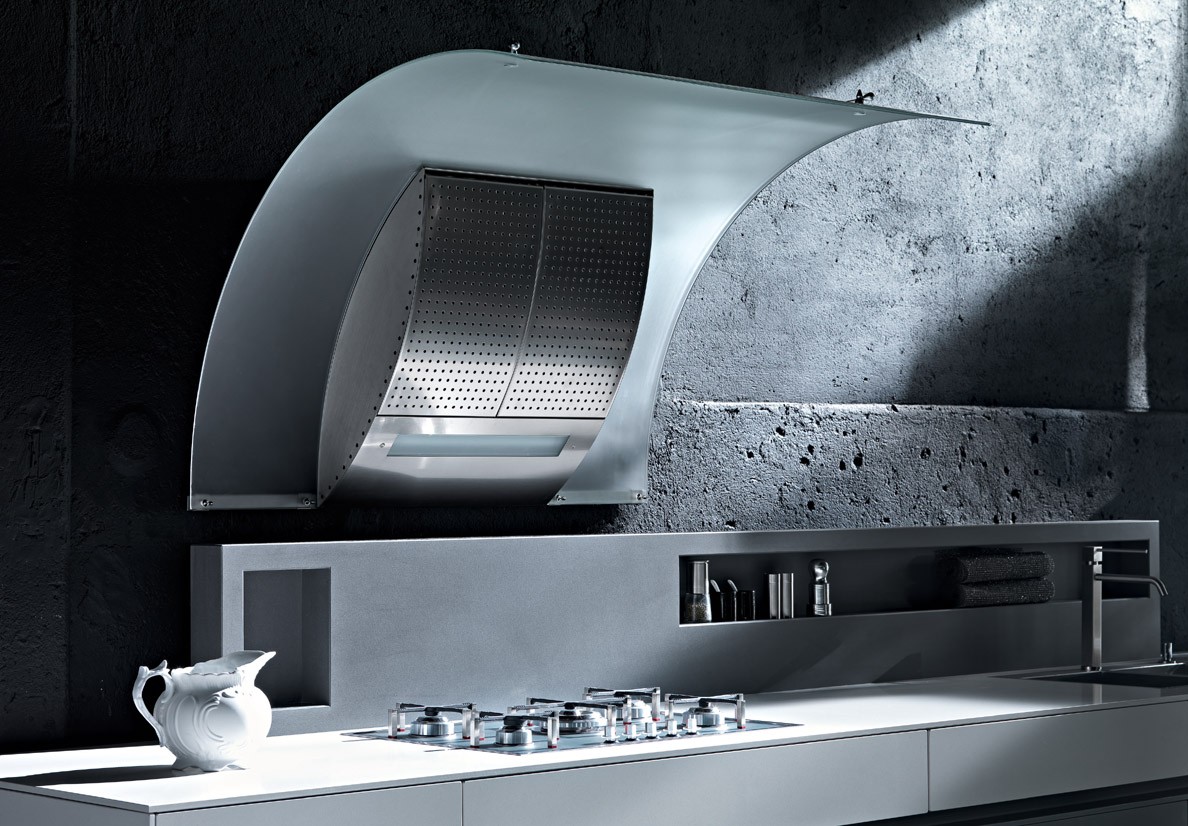
SUCTION HOOD
What you should do
After starting the cooking, switch immediately the hood on, in order to prevent the motor from overheating and to increase its effectiveness against odours and vapour.
All hoods by Valcucine are provided with anodised aluminium filters, that are practical and safe; they can be washed with ordinary wash-up liquids and reused.
To keep them efficient they should be washed at least once every three months.
The outer front panel (made of aluminium, stainless steel) should be cleaned with a soft cloth soaked in a neutral, liquid detergent and doing horizontal movements.
What you should NOT do
Never leave the hood switched off while cooking.
Never clean the front panel with acid water scale-removers or containing caustic substances, such products to clean ovens, floors, dishwashers or sanitary ware.
Moreover, never use abrasive products, metal wool or the like that would scratch the surface
After starting the cooking, switch immediately the hood on, in order to prevent the motor from overheating and to increase its effectiveness against odours and vapour.
All hoods by Valcucine are provided with anodised aluminium filters, that are practical and safe; they can be washed with ordinary wash-up liquids and reused.
To keep them efficient they should be washed at least once every three months.
The outer front panel (made of aluminium, stainless steel) should be cleaned with a soft cloth soaked in a neutral, liquid detergent and doing horizontal movements.
What you should NOT do
Never leave the hood switched off while cooking.
Never clean the front panel with acid water scale-removers or containing caustic substances, such products to clean ovens, floors, dishwashers or sanitary ware.
Moreover, never use abrasive products, metal wool or the like that would scratch the surface
FILTERING HOOD
What you should do
For a successful suction often replace the coal filters and wash the grease filter (in aluminium) at least every three months.
To reduce humidity when using a filtering hood, open the window often to change air in the room.
The front panel (made of aluminium, stainless steel) should be cleaned with a soft cloth soaked with a neutral, liquid detergent and doing horizontal movements.
What you should NOT do
Never leave the hood switched off while cooking.
Never clean the front panel with acid water scale-removers or containing caustic substances, such as products to clean ovens, floors, dishwashers or sanitary ware.
Moreover, never use abrasive products, metal wool or the like that would scratch the surface
For a successful suction often replace the coal filters and wash the grease filter (in aluminium) at least every three months.
To reduce humidity when using a filtering hood, open the window often to change air in the room.
The front panel (made of aluminium, stainless steel) should be cleaned with a soft cloth soaked with a neutral, liquid detergent and doing horizontal movements.
What you should NOT do
Never leave the hood switched off while cooking.
Never clean the front panel with acid water scale-removers or containing caustic substances, such as products to clean ovens, floors, dishwashers or sanitary ware.
Moreover, never use abrasive products, metal wool or the like that would scratch the surface
Hob Maintenance
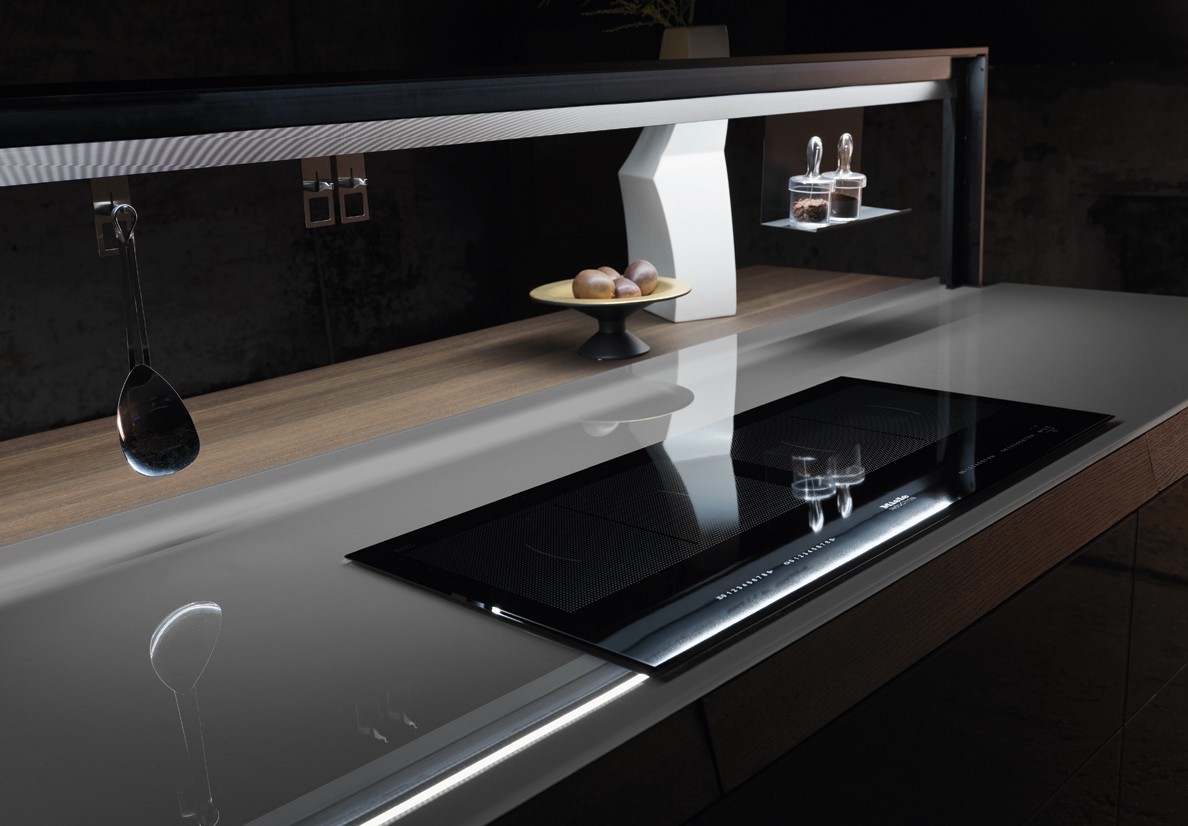
STAINLESS-STEEL COOKING TOP
What you should do
Everyday care is done with water and common cleaning products. Rinse the cooking top well and dry it with a soft cloth.
Possible grease stains can be removed with products containing alcohol or ammonia or with products specific for the cleaning of cooking tops.
Clean the hotplates with a cloth soaked in a non-aggressive detergent and then dry.
What you should NOT do
Do not use abrasive powders or products because they would scratch the surfaces. Do not use metal wool or sponges, steel brushes or knives.
WARNING: do not store open bottles containing chemicals (muriatic acid, products to clear blocked drains) near steel parts, because their vapours could corrode stainless steel.
Avoid any contact between steel-specific products and laminate worktops to prevent damage to the latter.
WARNING: pans should never project out of the cooking top to avoid overheating and not to damage the finish.
As regards the ideal dimensions of the pans, refer to the instructions provided in the information accompanying the appliance
Everyday care is done with water and common cleaning products. Rinse the cooking top well and dry it with a soft cloth.
Possible grease stains can be removed with products containing alcohol or ammonia or with products specific for the cleaning of cooking tops.
Clean the hotplates with a cloth soaked in a non-aggressive detergent and then dry.
What you should NOT do
Do not use abrasive powders or products because they would scratch the surfaces. Do not use metal wool or sponges, steel brushes or knives.
WARNING: do not store open bottles containing chemicals (muriatic acid, products to clear blocked drains) near steel parts, because their vapours could corrode stainless steel.
Avoid any contact between steel-specific products and laminate worktops to prevent damage to the latter.
WARNING: pans should never project out of the cooking top to avoid overheating and not to damage the finish.
As regards the ideal dimensions of the pans, refer to the instructions provided in the information accompanying the appliance
Oven Maintenance
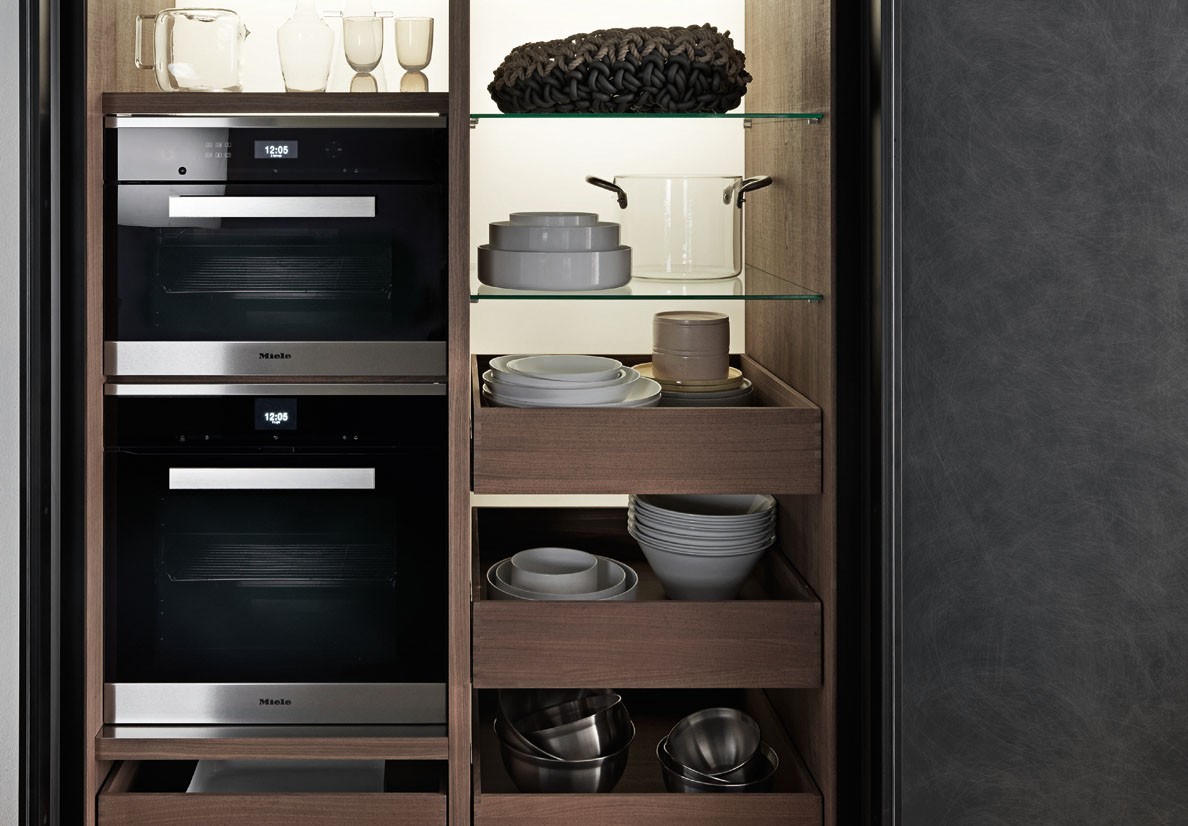
OVEN
What you should do
Switch off the oven power supply.
If the oven is not provided with self-cleaning panels, it should be cleaned immediately after use when its walls are still warm. Wipe it with a sponge soaked in lukewarm water and a neutral detergent.
What you should NOT do
Do not use abrasive powders or products because they would scratch the surfaces.
Do not use metal wool or sponges.
Spray cleaners should not be used very often and in big quantities and only on enamelled surfaces.
Do not apply them on heating elements, air fans and self-cleaning panels.
Switch off the oven power supply.
If the oven is not provided with self-cleaning panels, it should be cleaned immediately after use when its walls are still warm. Wipe it with a sponge soaked in lukewarm water and a neutral detergent.
What you should NOT do
Do not use abrasive powders or products because they would scratch the surfaces.
Do not use metal wool or sponges.
Spray cleaners should not be used very often and in big quantities and only on enamelled surfaces.
Do not apply them on heating elements, air fans and self-cleaning panels.
Refrigerator and Freezer Maintenance
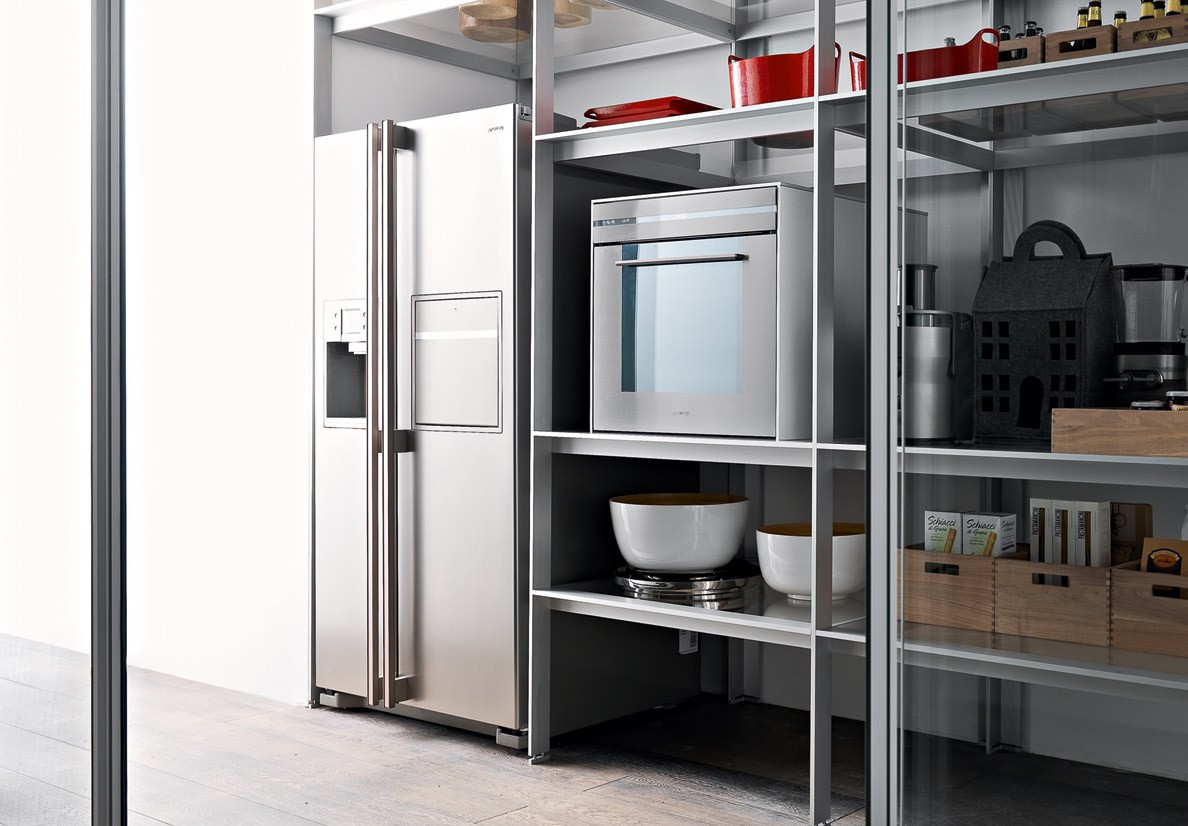
REFRIGERATOR AND FREEZER
What you should do
To clean the interior use only neutral detergents.
To eliminate bad odours wipe it with a cloth moistened with vinegar.
Freezers and storage boxes should be defrosted regularly to keep their performance good; to remove the ice layer use only the special plastic scraper supplied with the appliance.
In refrigerators provided with automatic defrosting system keep the drain always clean (see picture).
What you should NOT do
Do not use aggressive or abrasive detergents, nor metal or sharp objects to remove the ice layer, because they could damage the cooling plates.
WARNING: if the drain is clogged, it will cause an overflow of fluids in the appliance
To clean the interior use only neutral detergents.
To eliminate bad odours wipe it with a cloth moistened with vinegar.
Freezers and storage boxes should be defrosted regularly to keep their performance good; to remove the ice layer use only the special plastic scraper supplied with the appliance.
In refrigerators provided with automatic defrosting system keep the drain always clean (see picture).
What you should NOT do
Do not use aggressive or abrasive detergents, nor metal or sharp objects to remove the ice layer, because they could damage the cooling plates.
WARNING: if the drain is clogged, it will cause an overflow of fluids in the appliance
Dishwasher Maintenance
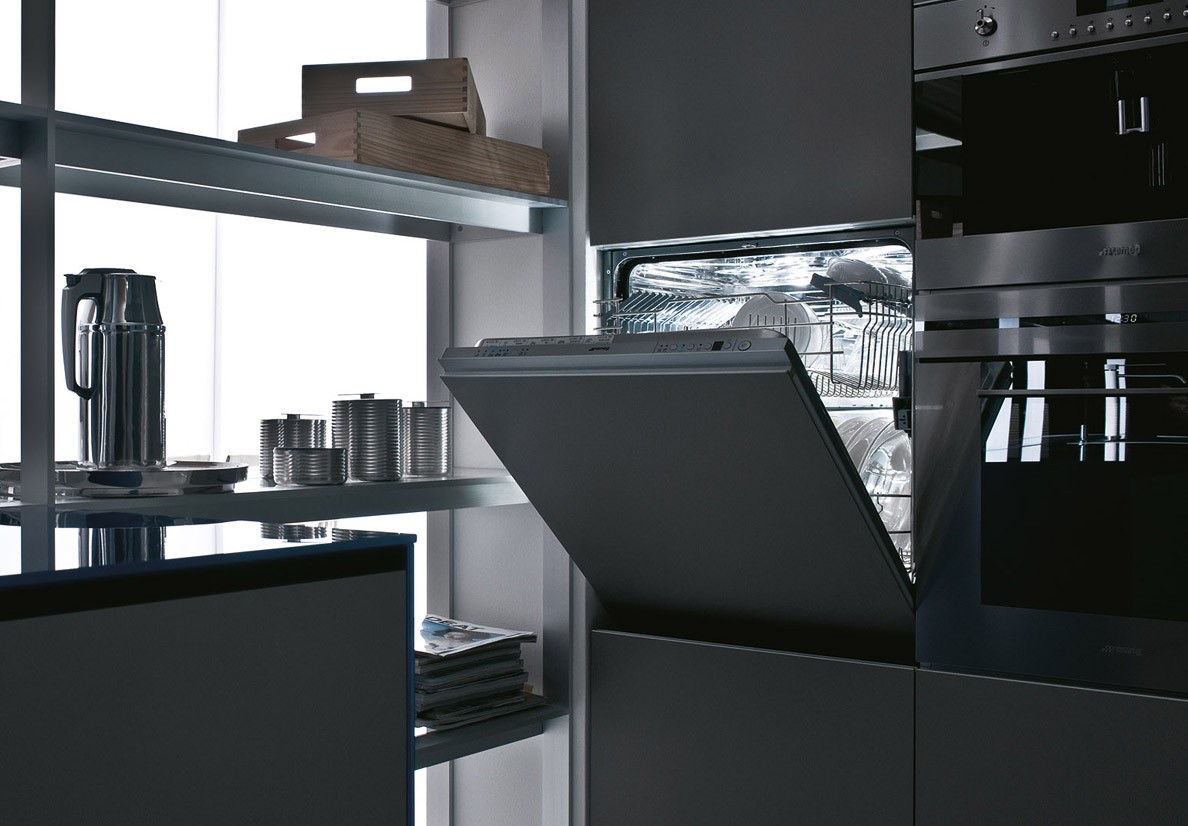
DISHWASHER
What you should do
To guarantee the proper functioning of the dishwasher regularly clean the filters and check the levels of salt and rinse aid, as indicated in the instructions.
Use only detergents specific for dishwashers and in the minimum recommended quantity.
Keep the door sealing profile clean to guarantee its watertightness; possible leaks would damage the nearby furniture.
If these anomalies are observed, contact the installer in order to check the appliance.
What you should NOT do
Do not use great quantities of detergent that do not assure better results, but 'only' contribute to increase the water pollution.
WARNING: dishwasher detergents are highly caustic, therefore must be kept out of children's reach.
To guarantee the proper functioning of the dishwasher regularly clean the filters and check the levels of salt and rinse aid, as indicated in the instructions.
Use only detergents specific for dishwashers and in the minimum recommended quantity.
Keep the door sealing profile clean to guarantee its watertightness; possible leaks would damage the nearby furniture.
If these anomalies are observed, contact the installer in order to check the appliance.
What you should NOT do
Do not use great quantities of detergent that do not assure better results, but 'only' contribute to increase the water pollution.
WARNING: dishwasher detergents are highly caustic, therefore must be kept out of children's reach.
